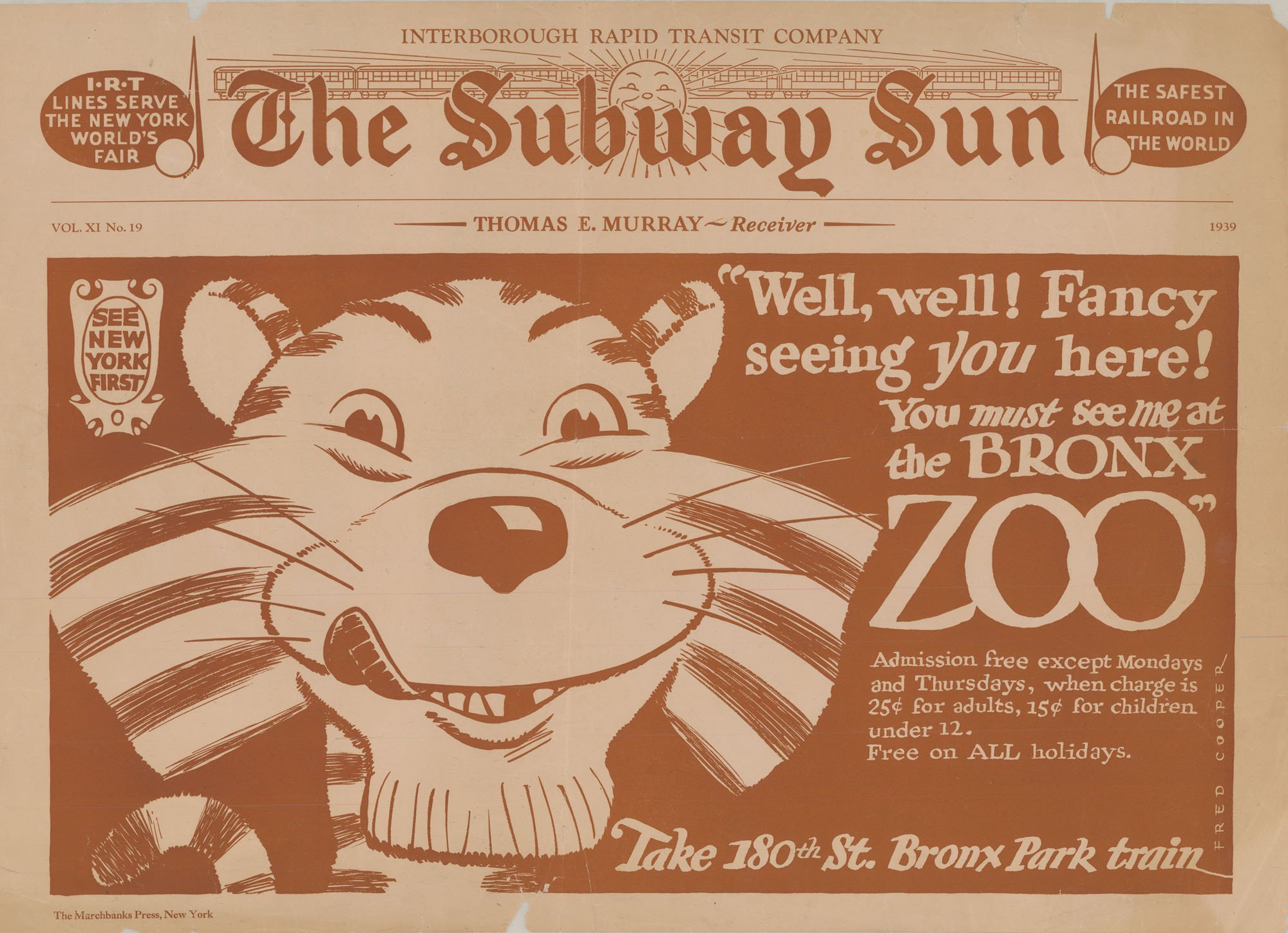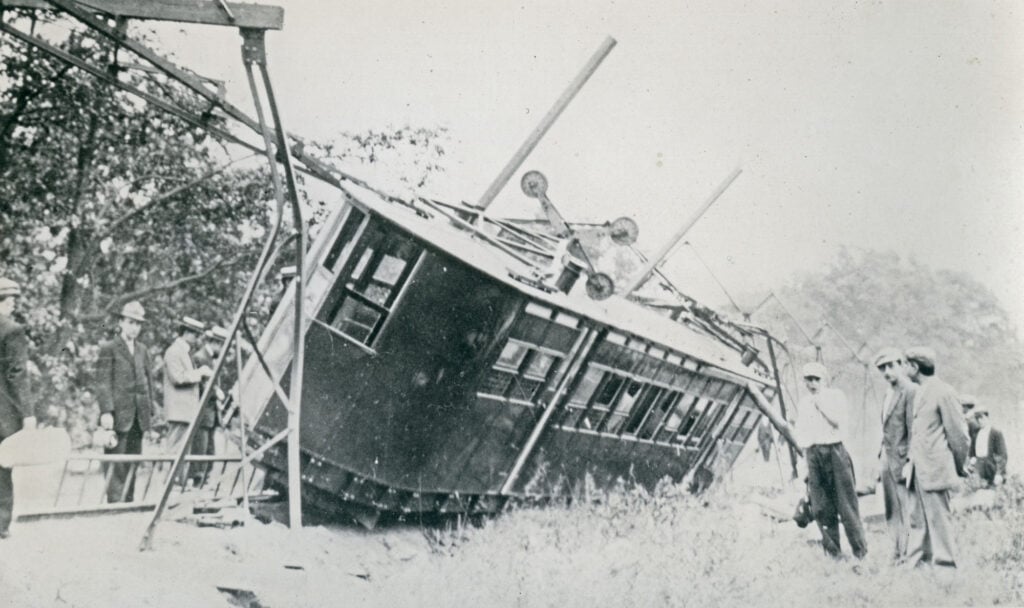
July 11, 2022
The Bronx Was Built by Transit
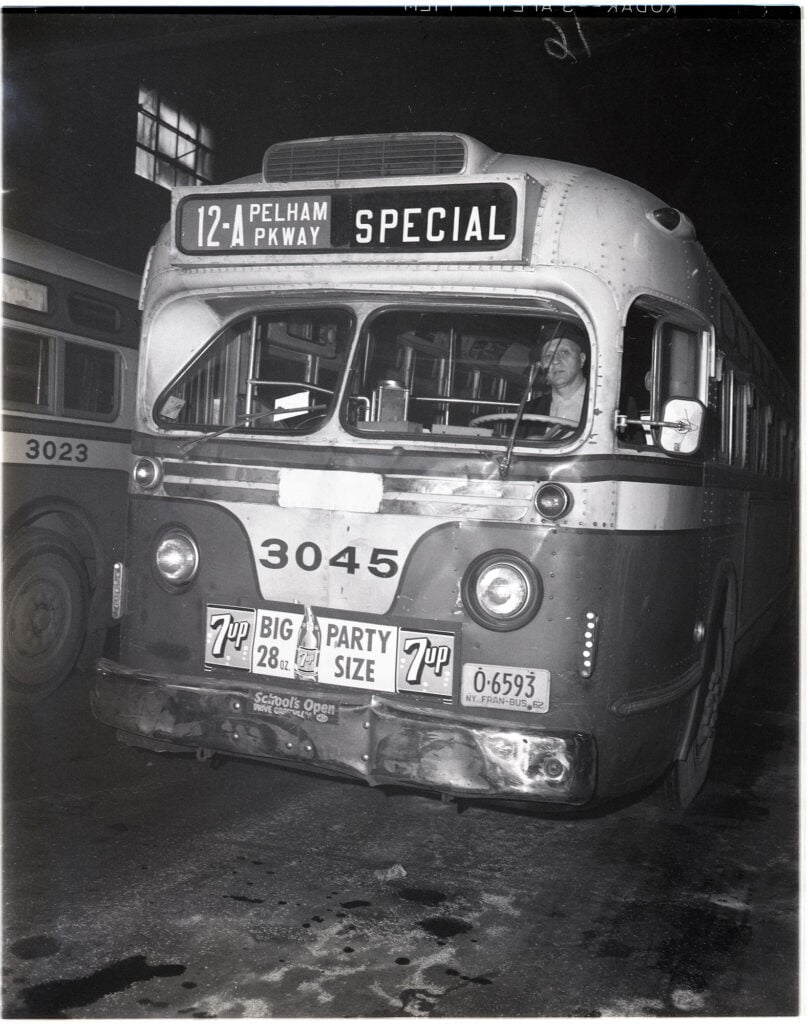
The landmarked former administrative building of the New York, Westchester, and Boston Railroad, an Italianate villa designed by Fellheimer and Long and completed in 1912, remains in the Bronx and now serves as MTA office space.
There are greater curiosities, such as the City Island monorail, technically the Pelham Park & City Island Railroad, a 3.2-mile railroad. What happened to our monorail? Well, in a slapstick-style sequence, the track sank into soft ground and the inaugural train car collapsed. It was repaired but shuttered about a year later. Horsecar routes offer additional humor. A photo appears of the Harlem Bridge, Morrisania and Fordham Railway, known as the “Huckleberry Road.” The caption, drawn from a 1913 book, explains that the car would jump the track so often that “the passengers found ample time to pick huckleberries along the road.”
The Bronx was a great large slab of nourishment for a growing New York City, a theme evidenced in a variety of ads demonstrating ways it might be carved and plated. An 1873 map from The New York Tribune “What Annexation Would Accomplish” displays plenty of land for settlement. Promotions depict the housing-destined former Lorillard Spencer Estate, Morrisania Village and, more recently, Paul Rudolph’s Tracey Towers atop the Jerome Yards.
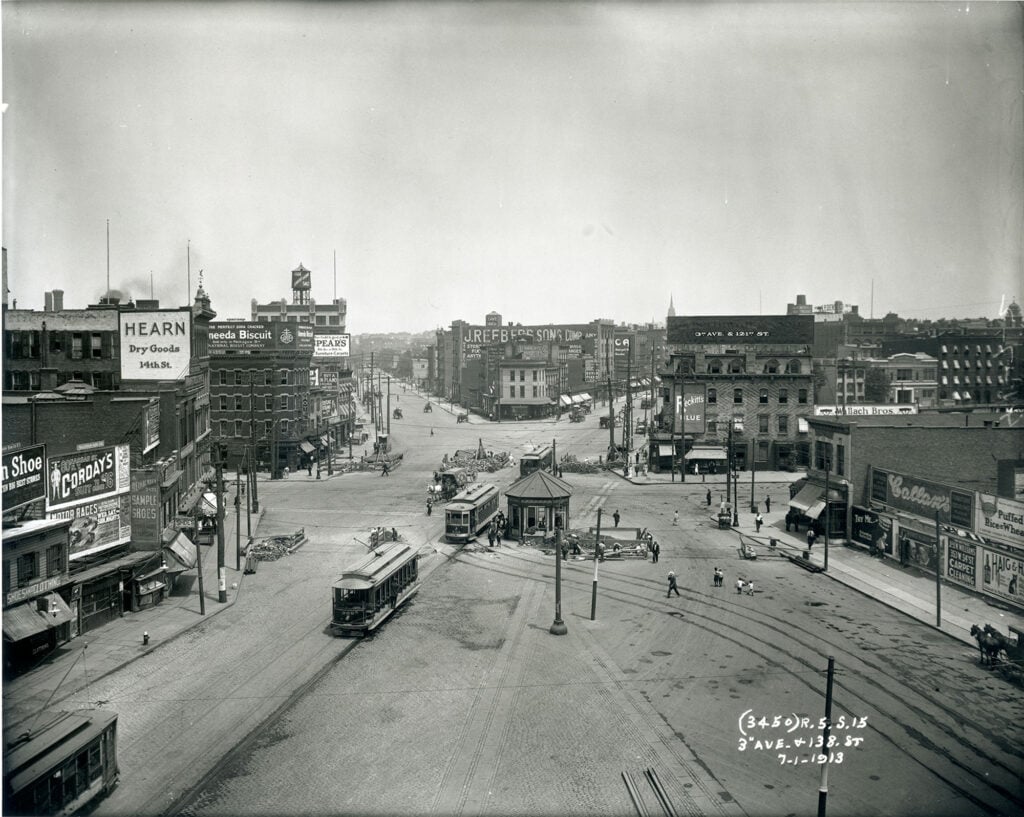
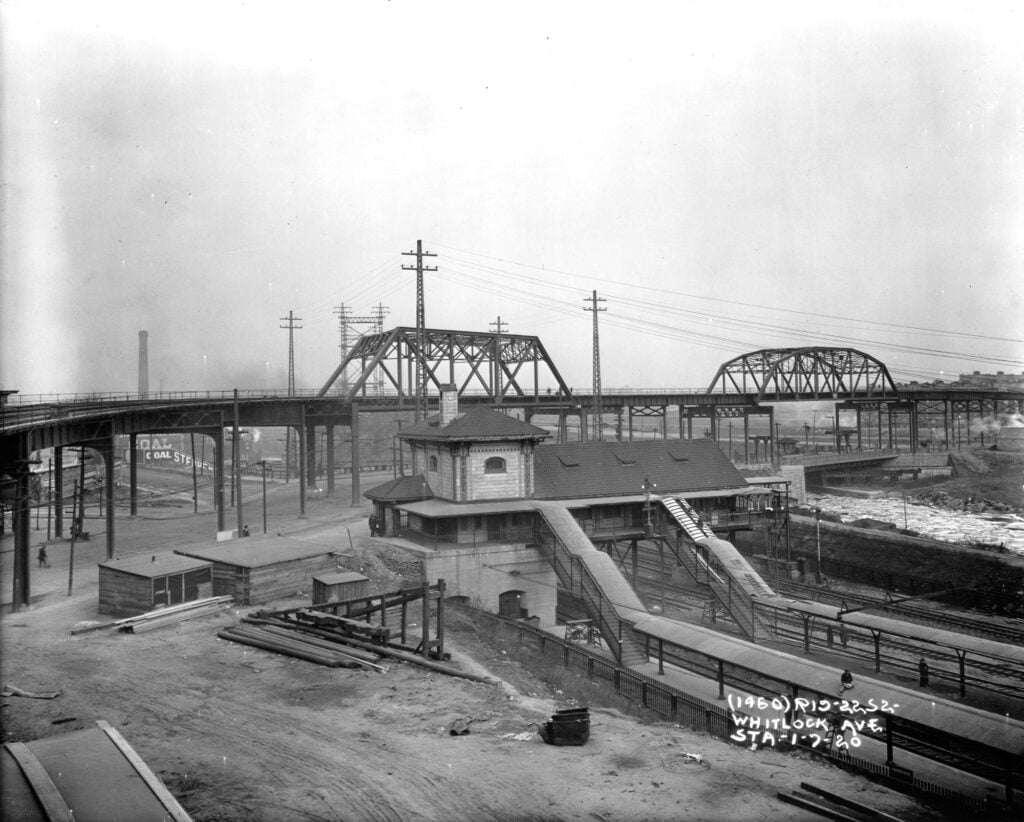
The boom in housing along new IRT lines is amply demonstrated, a process that played an immense role in undergirding the Bronx’s growth from 200,000 residents in 1900 to 1.4 million by 2020. Prominent demographics that filled the Bronx are detailed, from Irish to Puerto Rican to Italian. There’s sheet music for a 1922 Yiddish “satirical play about a working-class man who falls asleep on the subway and has dreams inspired by the ads he sees above his head.”
Other alluring fragments of subway boosterism are featured: there’s concept art for “The Subway Sun” and “The Elevated Express” with A1 stories such as “Hippo! Hippo! Hip-Hooray!! Visit Our Bronx Zoo Today!!” and “Take I.R.T. Lines to Public Golf Courses.”
Of course, not every scheme for the Bronx was actually realized, no one is taking the 2nd Avenue subway to the Bronx today or possibly ever, however rational the 1919 plan displayed to extend it that far is. Unrealized expansions will come as no surprise to any straphanger or transit-watcher, but there is at least one talisman of progress: a feature on the four Penn Station Access infill stations on the Metro North Railroad’s New Haven Line. 61 percent of borough residents didn’t own a car as of the 2000 census. Revive a few of these dusty old plans and that percentage could surely climb higher.
Would you like to comment on this article? Send your thoughts to: [email protected]
Related
Profiles
Equipo de Arquitectura Practices Material Sincerity
The Paraguay-based firm integrates material rigor and contextual design into its cultural and residential projects.
Profiles
Format Architecture Office Envisions an Expansive Design Process
Format Architecture Office (FAO) helps clients hone their vision with a focus on the driving forces behind each design decision.
Profiles
Pallet’s Tiny Home Villages Build a Bridge to Permanent Housing
The Washington-based company creates rapid response shelter villages that can be constructed in a matter of days.



